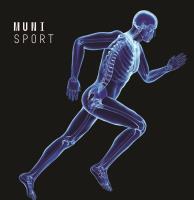Effect of 6-Month Fascia-Oriented Training on the Dynamics of Changes and the Height of Vertical Jump in Well-Trained Junior Female Volleyball Players
Effect of 6-Month Fascia-Oriented Training on the Dynamics of Changes and the Height of Vertical Jump in Well-Trained Junior Female Volleyball Players
Author(s): Renáta Vychodilová, Martin Zvonař, Martin Sebera, Alena PokornáSubject(s): Sports Studies
Published by: Masarykova univerzita nakladatelství
Keywords: volleyball; fascia-oriented training; height of vertical jump; dynamics of changes
Summary/Abstract: Based on the research review, fascia-oriented training may positively influence sports performance. Its component focused on the “catapult” mechanism can increase the capability of the connective tissue to store and release kinetic energy, which is involved in various movement actions, activities and skills including the jumping skills in volleyball. The study was conducted to assess the effect of the 6-month fascia-oriented training on the height of the vertical jump in well-trained junior female volleyball players. 16 players (age 17.31 ± 0.98; height 173 ± 5.26; weight 65.25 ± 6.75), members of one team competing in the national league, were randomly assigned for the training group (TG) and control group (CG). TG participated in a supervised 25-minute fascia-oriented training twice a week for six months. To measure the height of the jump, the force plate Bertec FP6012-15-4000 was used. Three testing measures were executed: pre-test, mid-test and post-test with three trials of the standing vertical countermovement jump with all arm movement. The study presupposed that after three months, the height of jump may rise slightly more in TG than in CG. After six months, a statistically significant increase was expected in TG compared to CG. Based on the results of the study, we conclude that the 6-month fascia-oriented training focused on the development of the height of vertical jump in well-trained junior volleyball players neither complied with the assumed dynamics in changes nor was statistically significantly beneficial. However, the dynamics of the changes indicate that fascia-oriented training may positively influence the stability and efficiency of the jumping performance during the game season.
Journal: Studia sportiva
- Issue Year: 13/2019
- Issue No: 2
- Page Range: 6-14
- Page Count: 9
- Language: English

